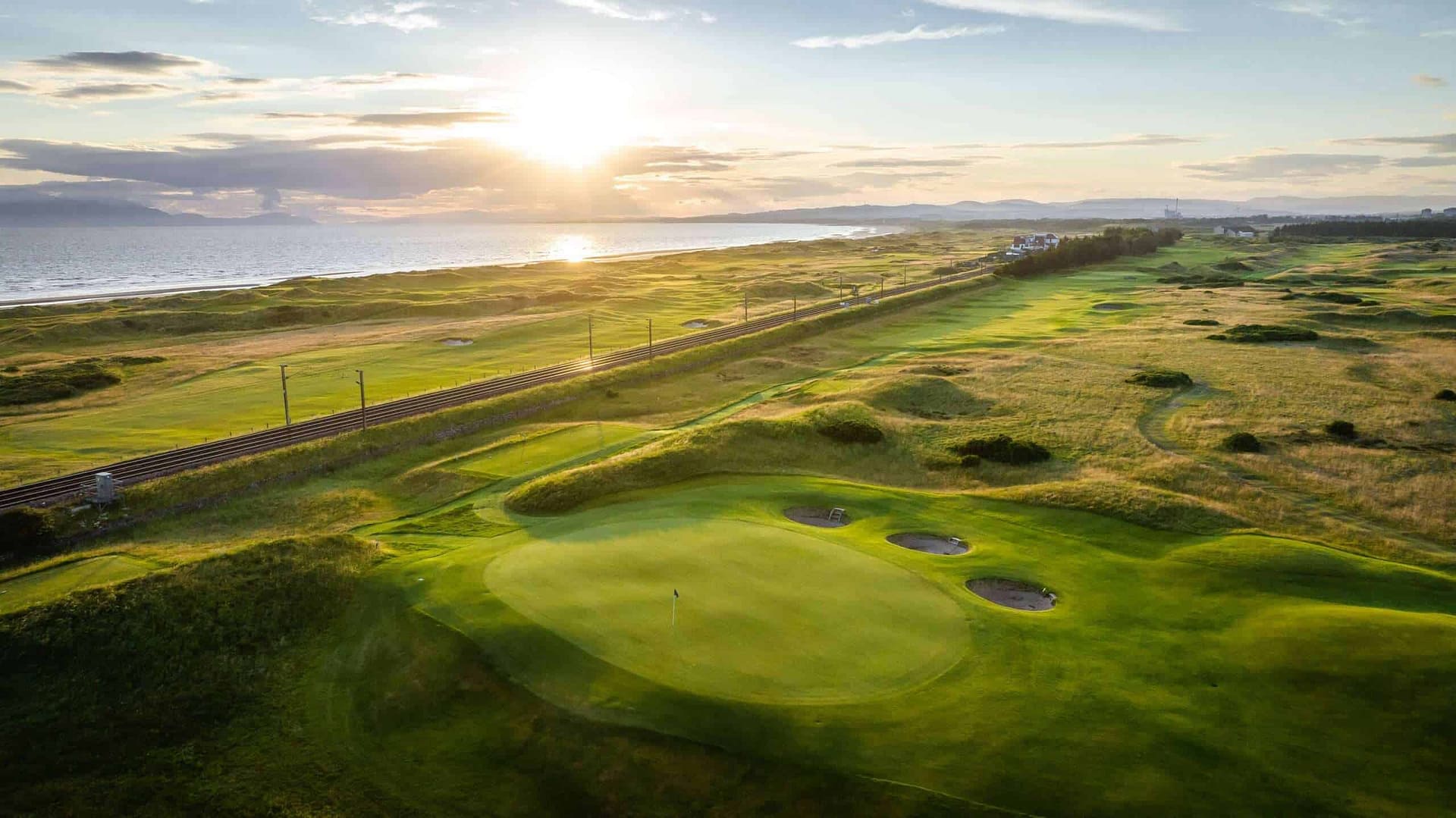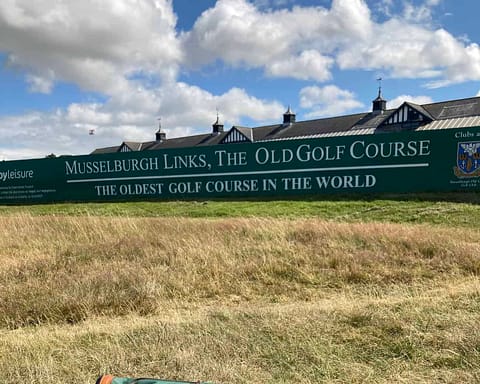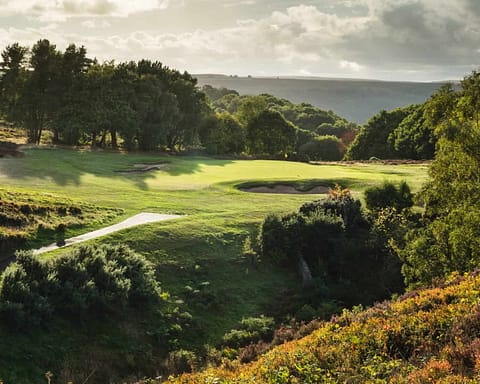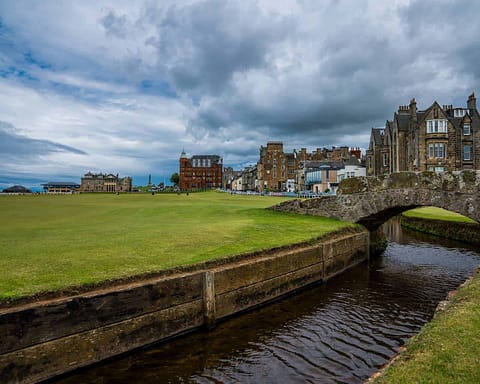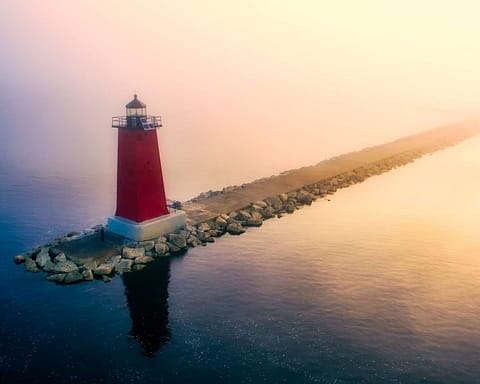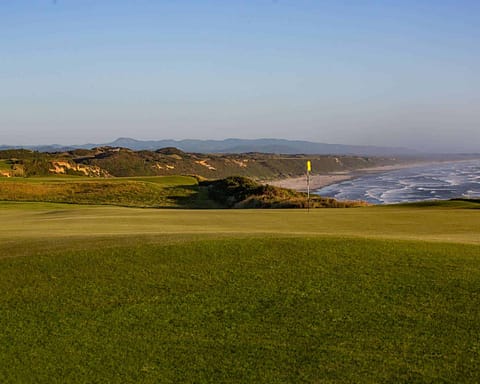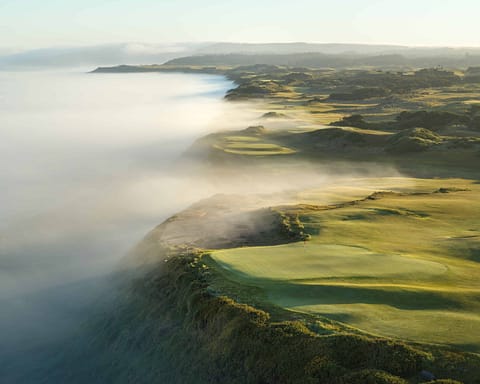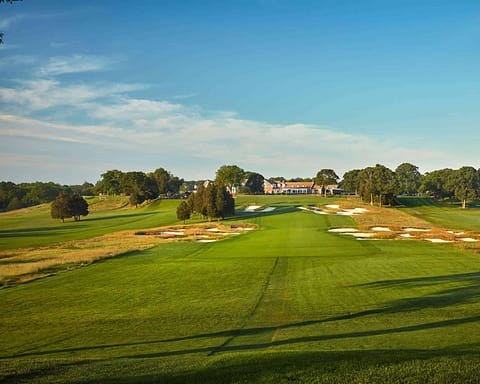There is no doubt that Scotland is golf’s holy land; the birthplace of the game itself as well as some of its greatest players. But for centuries, since golf began here some 400-odd years ago, there has been a question over where in Scotland offers the greatest golf experience.
There’s East Lothian, with the likes of Muirfield, Musselburgh, North Berwick and Gullane. The kingdom of Fife can boast the Old Course, St Andrews, Dumbarnie Links and Kingsbarns. The Highlands has Royal Dornoch, Brora, Tain and Golspie, while on the Aberdeenshire coast you will find Cruden Bay, Murcar Links and Royal Aberdeen itself.

But this time, I was drawn west to Ayrshire and a stretch of golfing real-estate as historic as any. Here pure Scottish links courses run cheek-by-jowl from Gailes Links down to Prestwick Golf Club where the Open Championship was first contested more than 150 years ago.
I had come to visit two neighbours – Dundonald Links and Royal Troon Golf Club – who co-exist cordially. And why wouldn’t they? They are separated by five miles along the shores of the Firth of Clyde and each have space to spread out through the dunes. Both may have sweeping views of the rugged Isle of Arran, but they could hardly be more different.

Dundonald – ultimate base for Ayrshire golf
I arrive at Dundonald, my home for the next two nights, where there’s a free charger to plug my electric car into before I head into the brand-new clubhouse for lunch. Gone is the Portacabin that once did for an HQ, this one opened three years ago and is magnificent. Clad in still-untarnished stone with a wrap-around balcony on its upper floor, it’s topped with a grass-covered roof, so it blends in with the surrounding dunes, despite its youth.

The interior is dark and edgy downstairs (with seriously enviable wallpaper in the women’s loos) while upstairs is an entirely open-plan dining room and bar. In from the wind, you still feel you’re out on the links – it has views of the 1st, 9th, 10th and beyond; the perfect place to let your wind-stripped cheeks turn rosy after a round.

The restaurant is called The Canny Crow, named after the birds on the course who have developed a knack for undoing zips and helping themselves to your mid-round snacks and whatever else they might find. No need to scavenge here though – scallops and black pudding, sea bream and chorizo, rhubarb, and custard…the crows can keep my KitKat.
The only corner sequestered away is The Whisky Room. Here bottles of the best are on display and available to taste if you have deep pockets, and the room is dominated by a huge table, hewn from the trunk of a hefty Scottish Oak. There’s a game they play on it – invented by a visiting American journalist, the challenge is to roll three golf balls down it’s length and see who can get closest to the end without dropping over the edge. It was loud, it was competitive, it was fun – a new tradition.
Tradition and trepidation at Troon
No need for new traditions at Royal Troon Golf Club. The place is tradition itself.
Ancient stone pillars guard the entry, and the clubhouse looks the way it has done for 137 years; single-storey, sprawling sandstone, rich with the patina of decades standing against the winds off the Firth of Clyde.
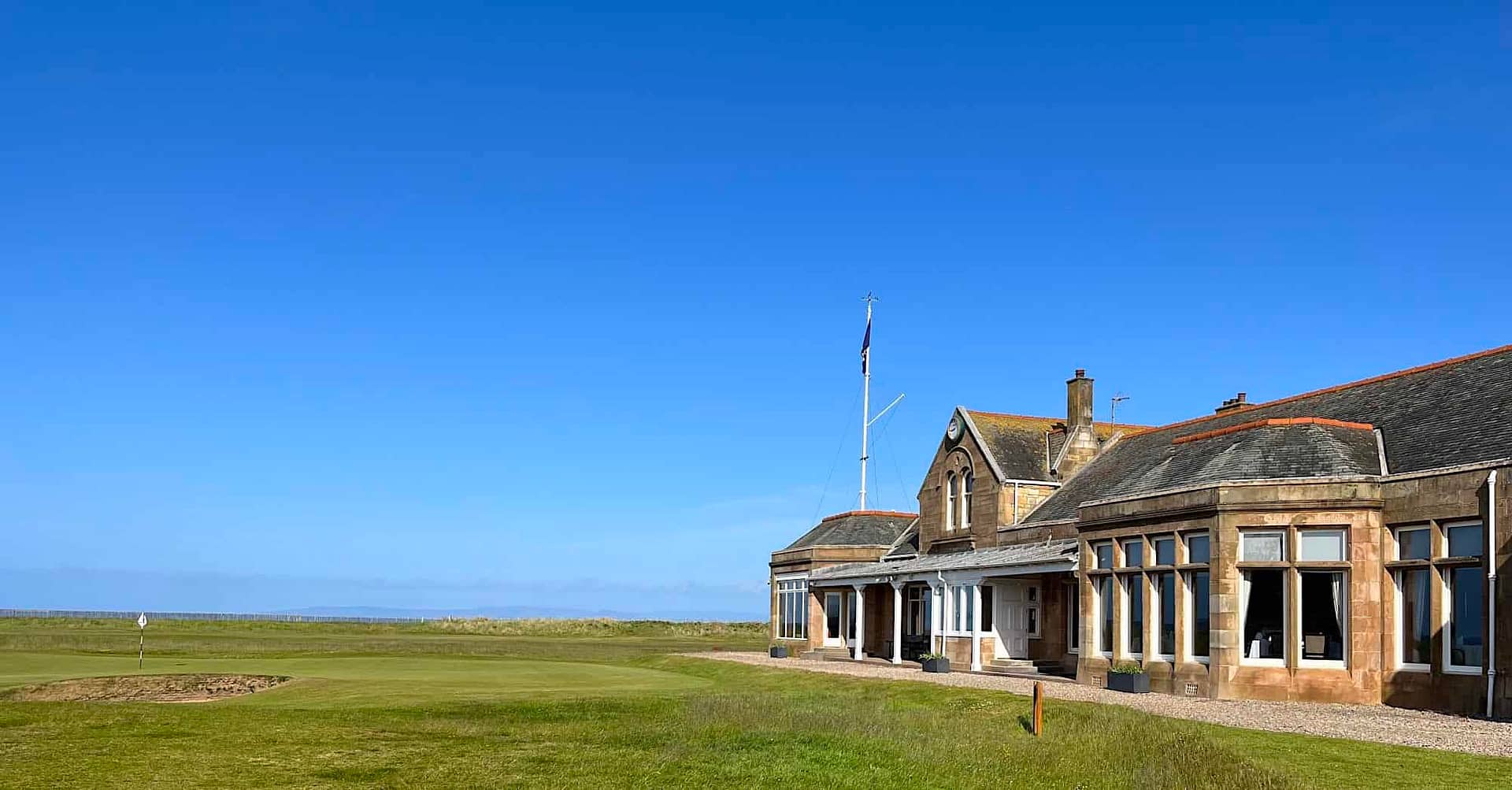
Inside, the royal blue monogrammed carpet sweeps up the cantilevered staircase, above the Claret Jugs that sits in a glass case in the entrance hall. A reminder that this is no ordinary course. The heroics of Arthur Havers, Bobby Locke, Arnold Palmer, and the other Open champions to have triumphed at Troon are celebrated in a display on the walk to the locker room.
In the Ailsa Room, there’s an oil painting of Colin Montgomerie – looking rather grumpy, it must be said – and another of Palmer hangs over the fireplace. Leather-bound books and comfy, time-worn sofas welcome weary golfers who have battled their way around these fearsome links.
We head out to the 1st tee – where the Claret Jugs stands on a plinth today as the course welcomes us ahead of next year’s Open Championship. The 1st fairway looks like a perfectly manicured battlefield – if such a tautology can be pictured.
Bunkers pepper the landscape – big ones, deep ones, some so small and sneaky you can’t even see they are there. There are 9 of them on the 1st, 11 on the 2nd, 5 on the 3rd and so on and so on. My strategy for the day was to avoid them at all costs; in the middle of the 2nd fairway, I was pulling my sand wedge for the third time. During the 2016 Open, 2003 Champion Ben Curtis found three bunkers on the par 4 3rd. He took 10 strokes and afterwards said he wanted to “jump in the ocean.”
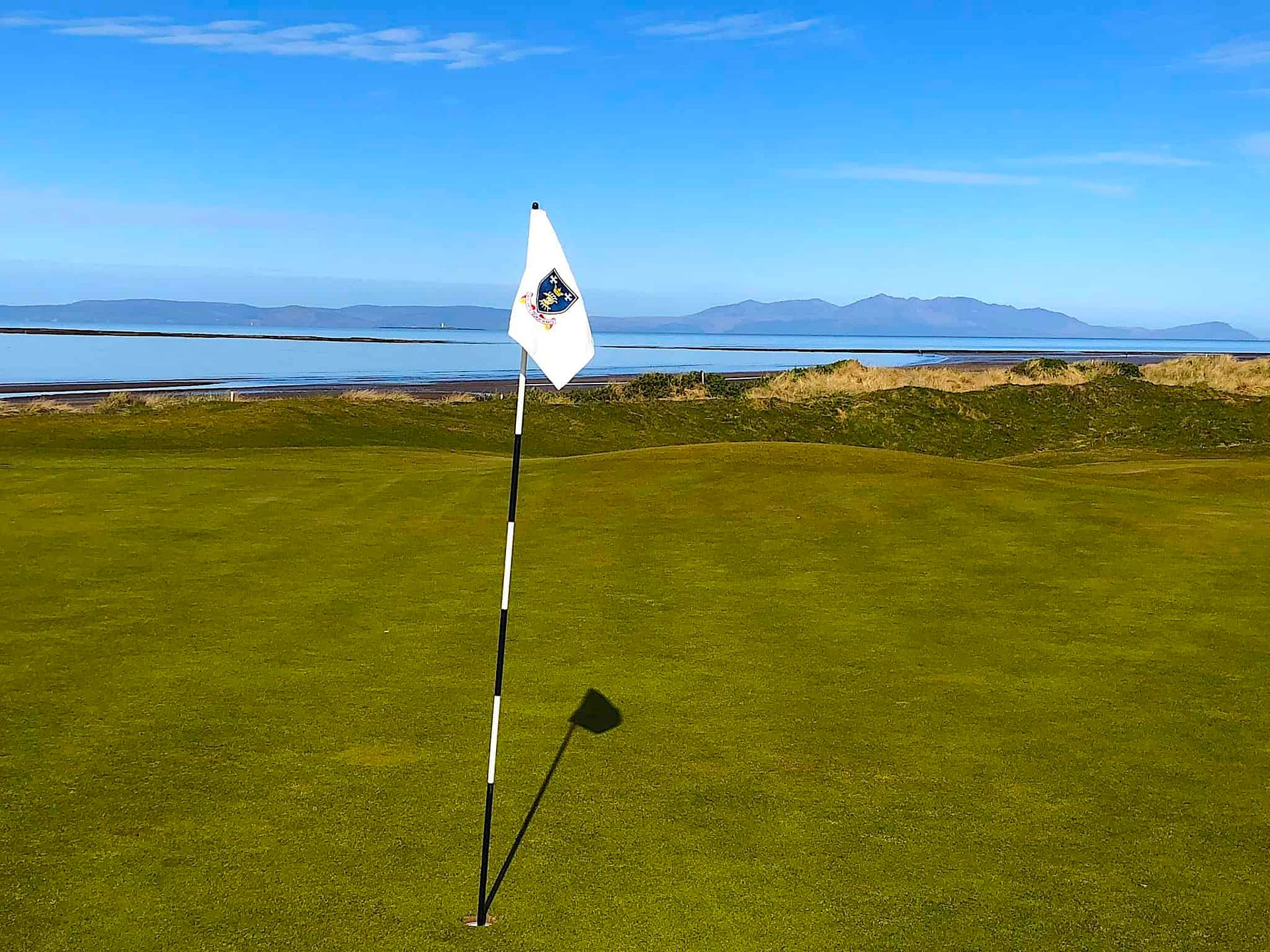
And when The Open was played here in 1982, a 22-year-old from Monterey, California, Bobby Clampett, was seven shots ahead with 31 holes to play until he went in 3 bunkers on the way down the par 5, 6th and made a triple bogey. Clampett finished in a tie for 10th. The eventual winner, Tom Watson would say “I didn’t win this championship. I had it handed to me”. My front nine was very much a Clampett and Curtis experience.
The Postage Stamp – small but scary
And then, of course, there’s the iconic par-3 8th hole at Royal Troon Golf Club – The Postage Stamp.
It’s the stuff of golfing nightmares. Everyone stands on that tee, high above the rest of Royal Troon, and prays for a miracle. You’d like a great story to take away – a par, perhaps, or even a birdie. Gene Sarazen’s is the ultimate tale. At 71 years of age, he was playing in his final Open Championship and made a hole-in-one here. But the 123-yard Postage Stamp doesn’t hand out many happy endings – remember Bubba in 2016?

My story starts well but ends ignominiously; a well-struck 7-iron flies straight at the pin, but it’s like landing the ball on an upturned mixing bowl, and it rolls into the hopelessly deep bunker on the right of this tiny green. Steep at the back, even steeper at the front, there’s no way I can get a back swing, and playing out sideways will land me in even more trouble. It’s an impossible golf shot – and so it proves.
After several attempts I pick up and watch my playing partners putt out. Two bogeys and a triple. I want to go back and play it again and again, until I accept it’ll beat me 99 times out of a 100. Or until I get my own miracle. Unbelievably, it’s stroke index 18 – the easiest hole on the course? Another reminder, lads, that length isn’t everything.
On the back nine, the bunkers all but disappear. It’s as though they used their whole quota on the front or grew tired of all the digging. That’s not to say the test gets any easier. The rough is everywhere, sometimes the ball bounces and skips through it, and on others it sinks without a trace into those prickly little thorn bushes that scratch your ankles.
A par on the par-3 17th is the boost I need as our round draws to a close – it’s the hole that did for Greg Norman’s chances in the play-off for the 1989 Open. And a save from the sand (my 15,876th of the day) in front of the big bay windows of the clubhouse on the last spares my blushes.
Inside, over pints of Royal Troon’s own lager everyone is telling similar stories. Of how the course chewed them up and spat them out, of how the Postage Stamp will haunt their dreams, asking how on earth Henrik Stenson shot 63 on the final day in 2016 to lift the Claret Jug? Next year’s Open is already a guaranteed classic. Everyone has a huge smile on their faces. What an honour it’s been.

The home of Ayrshire golf trips
So back to Dundonald Links we go. We’re staying in their newly built lodges, that nestle in the dunes behind the course. Constructed of silvering larch and with dark zinc roofs, they look like beautifully modern beach huts. The bedrooms are huge, and the décor comes straight from a trendy interiors magazine, a dark kitchen with copper handles and matt black pendant lights. There are clever practical touches too, such as a large entrance area for parking trolleys and driers for wet clothes and shoes.

Ian Ferguson, General Manager at Dundonald Links, tells me the idea is to encourage holidays with mates. Some of the lodges only sleep a couple, but the larger ones have pool tables. They cluster around communal putting greens where the suggestion is that you put on some music, open some beers, and instigate a competition. I could happily settle in for a week. The knock-out pool tournament runs late into the night.
The course at Dundonald Links is just as fun. Designed by Kingsbarns’ architect Kyle Phillips, the brief was to create the ultimate modern links layout. Set back as it is from the sea, it’s not the pure links experience you get at Royal Troon, but it’s not trying to be Troon.
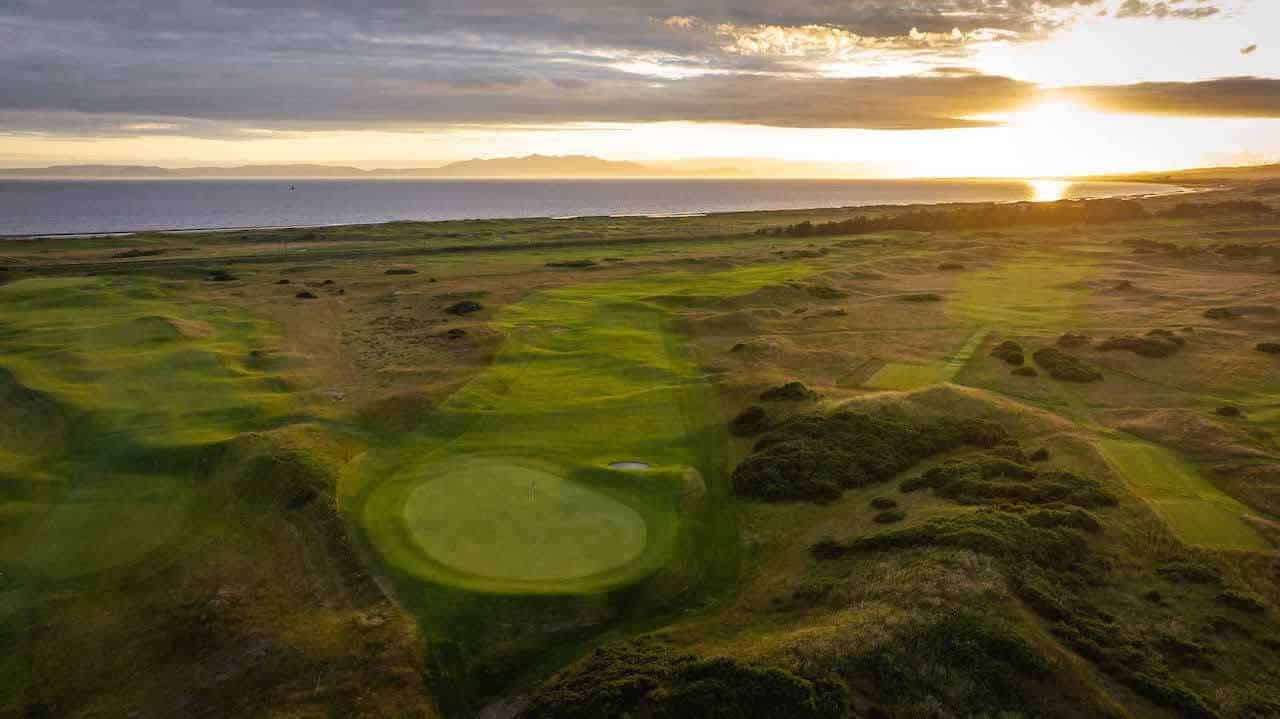
There are occasional holes, such as the par-4 9th, where bunkers intrude into the fairway. But for the most part, they’re tucked away in the rough, or by the side of the greens. This leaves you with wider, undulating targets off the tee – a chance to get off to a good start on most holes, which is useful both for score and morale. I only found two all day – and that was only on the 17th, which I double-bogeyed, my worst score of the day.
The superb halfway house – The Bothy – on the 10th tee deserves a mention. Increasingly I’m coming to believe that no course can be considered truly great until it has well-stocked stop midway. A bad round can be saved by a well-timed drink and a sausage roll.
Ayrshire golf – spoilt for choice
So, if I was to return for some more Ayrshire golf and could only play one of them again, which would I go for? Well, I’m told that by the time the Women’s Scottish Open returns to Dundonald, the greens will have been mown to a fiendish slickness. And those contesting final qualifying for The Open this summer will surely face more of a test weather-wise. We got lucky with a calm, warm day in May, milky sunshine reducing the peaks of Arran on the horizon to a purply, indistinct silhouette.
I enjoyed every minute of my round at Dundonald Links; at times, Royal Troon made my shoulders slump but I’m desperate to go back there and do better. Both these championship courses get under your skin. I walked off at Troon with so many “if only” moments that I want to put right. But perhaps I’d add more to that list if I ever get lucky enough to try again. Royal Troon may have been blissful torture, but I can’t wait for more. Dundonald, meanwhile, was just bliss.
The joy of Ayrshire golf, however, is that you don’t have to choose – come and play them both. Set up luxurious camp at Dundonald Links – it’s fair and fun, a brilliant stay-and-play. Come for the golf, stay for the food and the mood. And take on Royal Troon because, well, it’s Royal Troon and it needs to be played to be believed.
*For more information or to book a stay at Dundonald Links visit DundonaldLinks.com
*Katherine Downes was a guest of Dundonald Links
Scorecard for Dundonald Links
SCORECARD FOR ROYAL TROON


